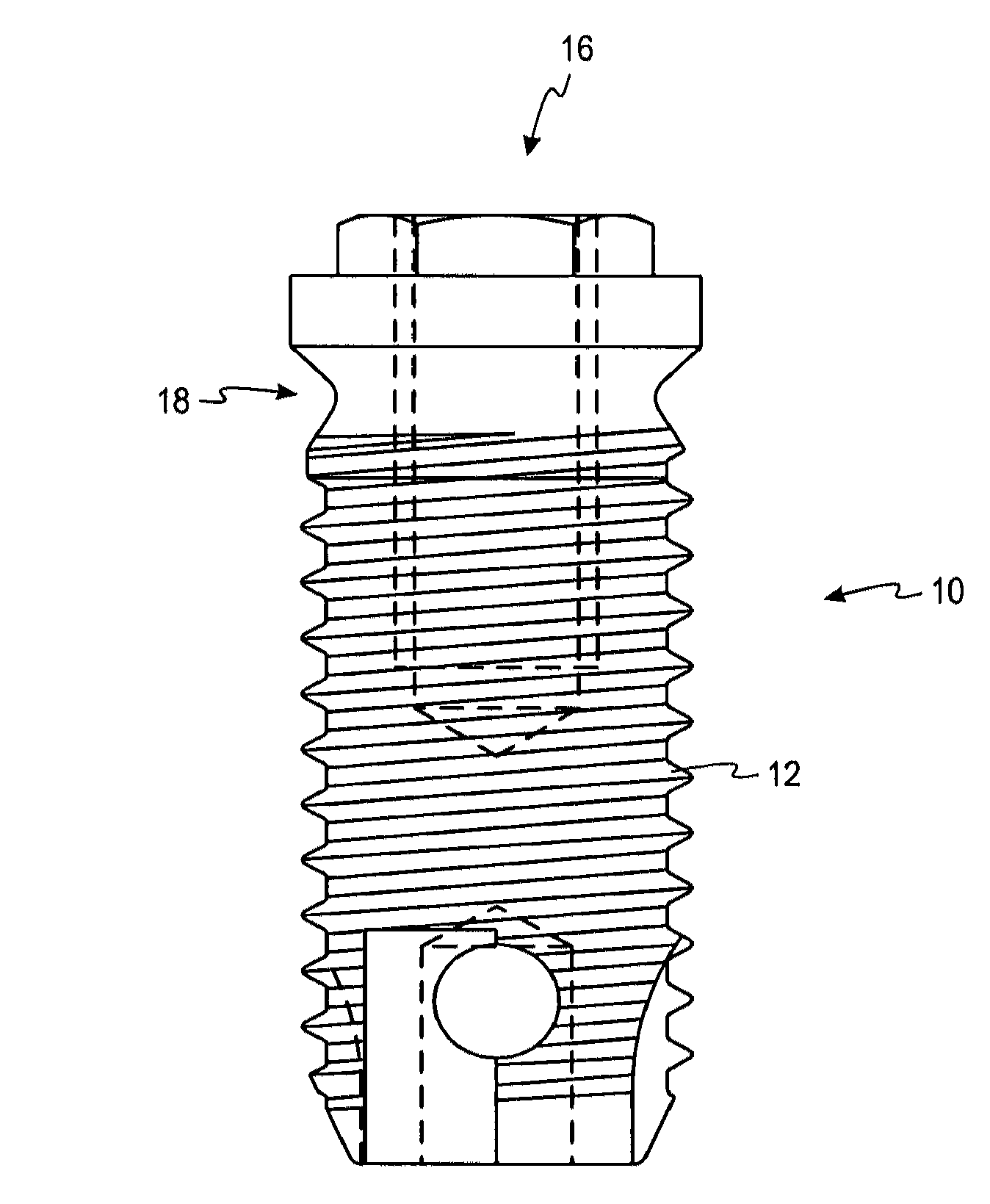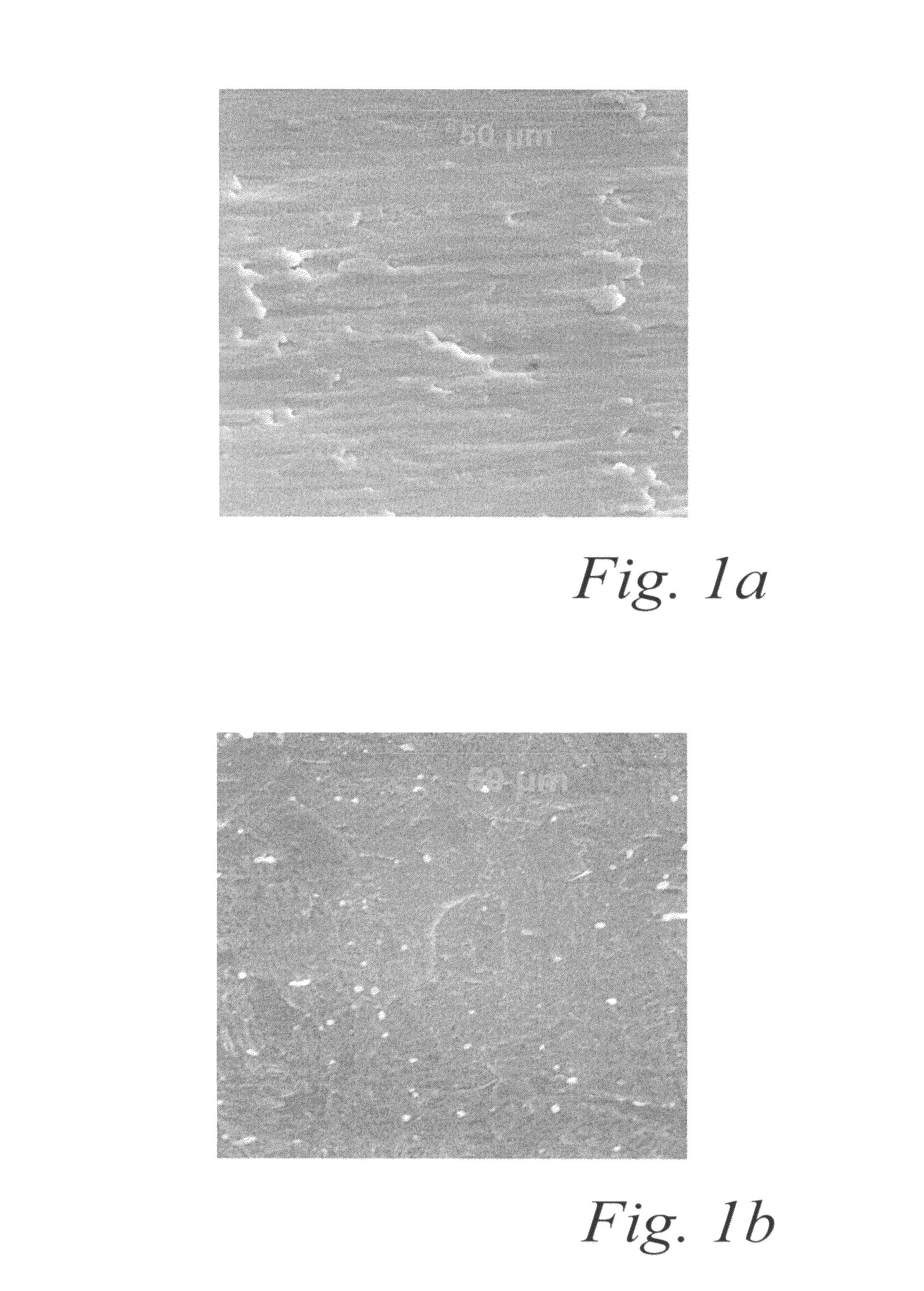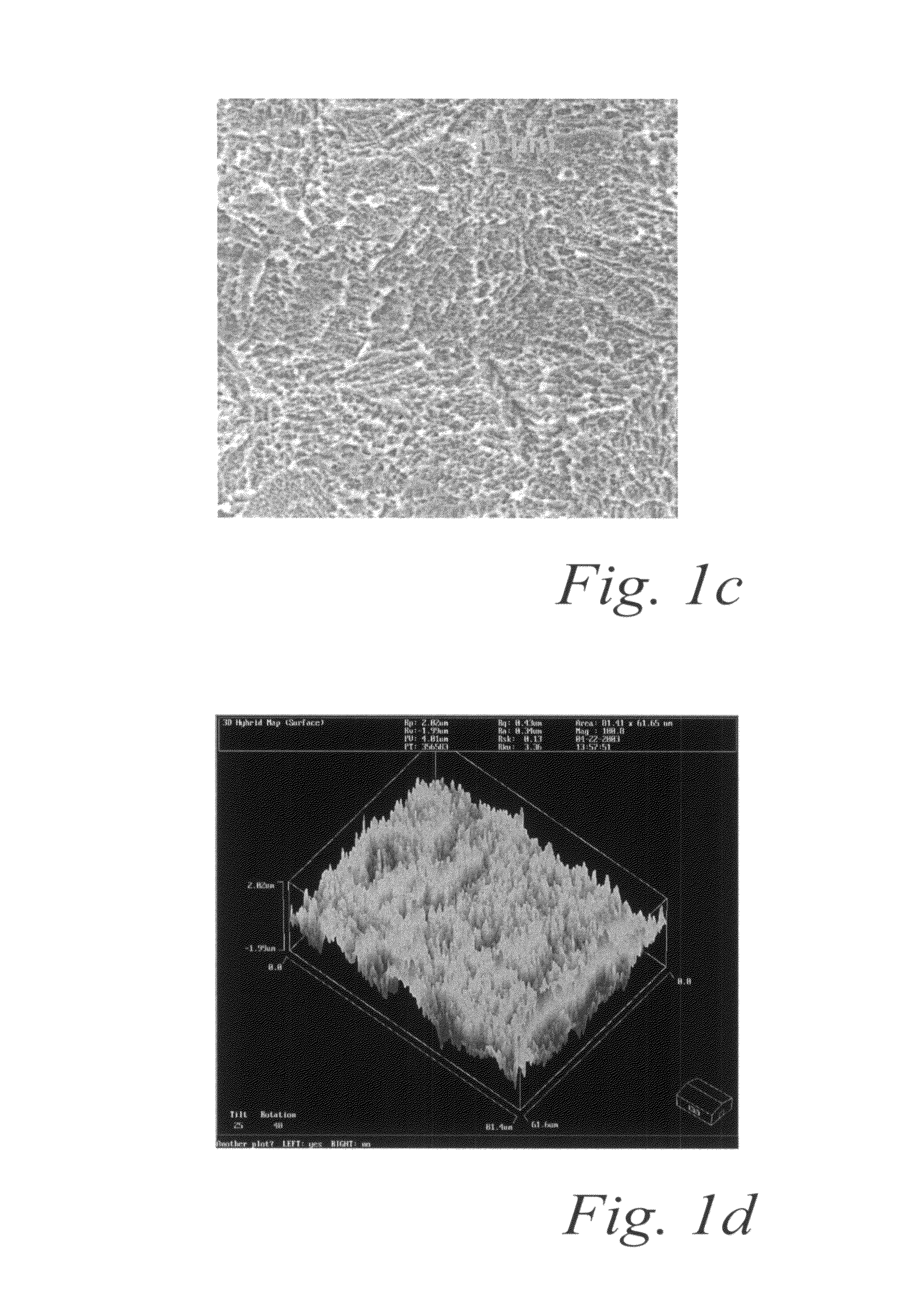Surface treatment process for implants made of titanium alloy
a titanium alloy and treatment process technology, applied in the field of titanium alloy surface treatment, can solve the problems of non-uniform results of the treatment process on titanium alloys, and achieve the effect of minimizing the loss of titanium metal
- Summary
- Abstract
- Description
- Claims
- Application Information
AI Technical Summary
Benefits of technology
Problems solved by technology
Method used
Image
Examples
Embodiment Construction
[0023]Although other metals, and ceramics have been proposed for use in dental implants, titanium has been generally used. Particularly commercially pure titanium, which contains trace amounts of carbon, iron, oxygen, hydrogen, and nitrogen. Titanium alloys have also been used since they are stronger than the commercially pure grades of titanium. One commonly used titanium alloy, Ti / 6A1 / 4V, contains 6 wt % aluminum and 4 wt % vanadium, hereafter referred to as Ti 6 / 4.
[0024]A characteristic of titanium and its alloys is the rapid formation of tenacious titanium oxide films on the surface, a feature which contributes to titanium's resistance to corrosion. This oxide film is considered to be a combination of various oxides of titanium, including TiO, TiO2, Ti2O3, and Ti3O4. It has been referred to the “native oxide” film. Measurement of the native oxide film by Auger spectrometer indicates that it typically has a depth of 70 to 150 Angstroms.
[0025]As previou...
PUM
| Property | Measurement | Unit |
|---|---|---|
| peak-to-valley heights | aaaaa | aaaaa |
| peak distances | aaaaa | aaaaa |
| wt % | aaaaa | aaaaa |
Abstract
Description
Claims
Application Information
 Login to View More
Login to View More - R&D
- Intellectual Property
- Life Sciences
- Materials
- Tech Scout
- Unparalleled Data Quality
- Higher Quality Content
- 60% Fewer Hallucinations
Browse by: Latest US Patents, China's latest patents, Technical Efficacy Thesaurus, Application Domain, Technology Topic, Popular Technical Reports.
© 2025 PatSnap. All rights reserved.Legal|Privacy policy|Modern Slavery Act Transparency Statement|Sitemap|About US| Contact US: help@patsnap.com



